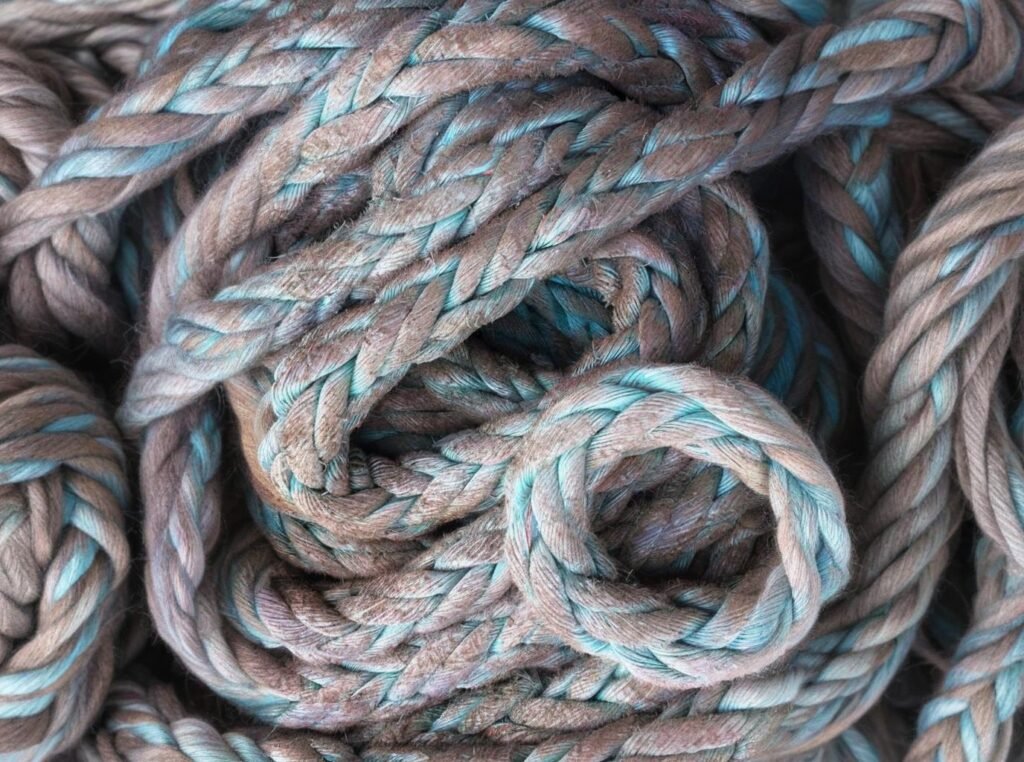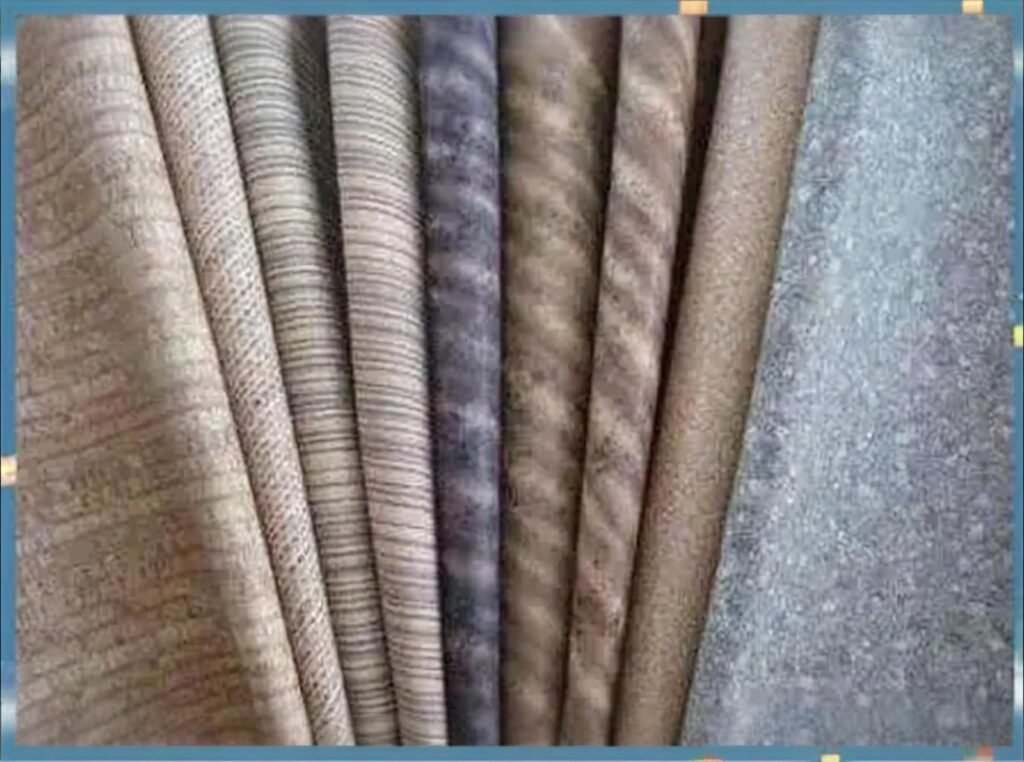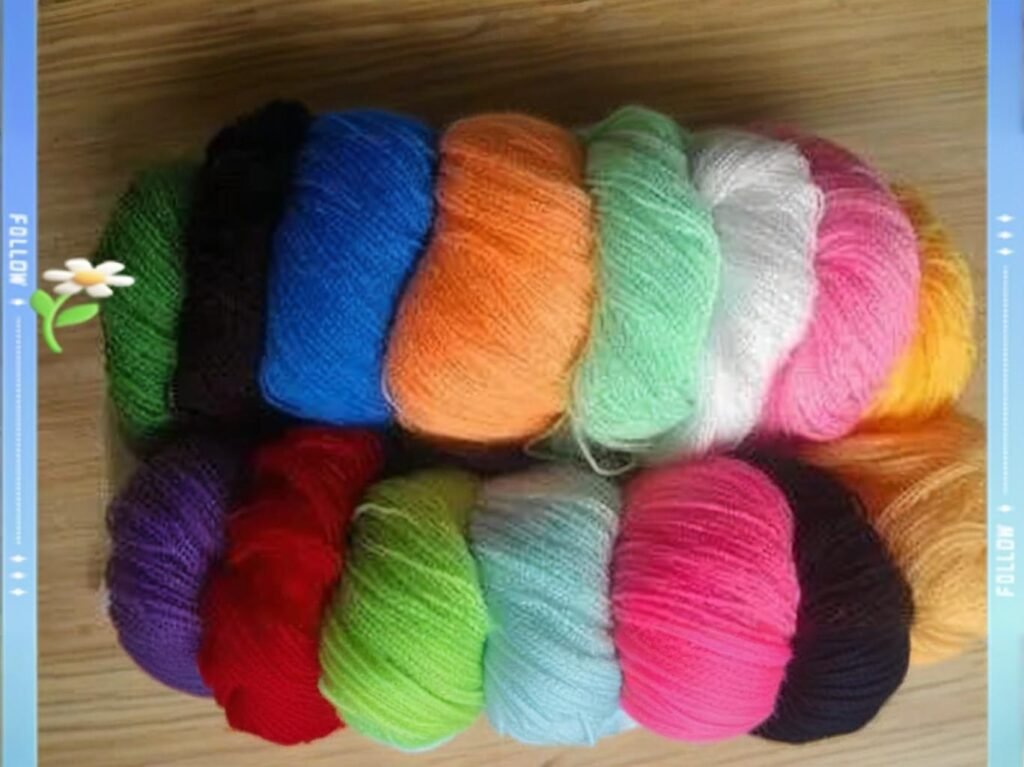Upholstery fabrics are no longer chosen purely for color or feel—they’re strategic decisions that can affect durability, branding, and long-term customer satisfaction. When it comes to synthetic upholstery fabrics, acrylic and polyester are two of the most debated choices among B2B buyers. From commercial furniture manufacturers to hospitality chains, the question remains: Which fabric delivers better value and longevity?
Acrylic fabric is a lightweight, UV-resistant material made from polyacrylonitrile, often used in outdoor and indoor upholstery for its vibrant color retention and soft wool-like texture. Compared to polyester, it offers better fade resistance and insulation, but polyester outperforms acrylic in tensile strength and abrasion resistance.
Understanding the strengths and trade-offs of each can help buyers avoid costly mistakes and optimize both function and aesthetic appeal. Take the case of a coastal resort group in southern California that recently switched from polyester to solution-dyed acrylic for their outdoor lounges—fading complaints dropped by 80%, and cushion replacement intervals extended by 2 years.
In this article, we’ll help you make informed decisions with real industry data, fabric comparisons, and sourcing insights. Let’s dive in.
What Is Acrylic Fabric and Why Is It Used in Upholstery?

Acrylic fabric is a synthetic textile created from polyacrylonitrile, offering excellent UV resistance, moisture resistance, and a soft texture—making it ideal for both indoor and outdoor upholstery applications.
Key Characteristics and Performance Metrics of Acrylic in Upholstery
- 1.1 How Acrylic Is Made Acrylic is spun from acrylonitrile through wet or dry spinning methods and then heat-set. It can be woven, dyed (especially solution-dyed), and coated for various upholstery uses.
- 1.2 Softness and Texture Acrylic often mimics the feel of natural wool. It provides a plush and cozy texture, making it appealing for lounge seating, hotel lobby furniture, or marine cushions.
- 1.3 UV and Colorfastness One of the strongest suits of acrylic is its UV stability. Solution-dyed acrylic retains its vibrant color under intense sun exposure.
| Feature | Acrylic Fabric Performance |
|---|---|
| UV Resistance | Excellent (ASTM G155 rating 4–5) |
| Water Repellency | High (especially when coated) |
| Colorfastness | 1500+ hours outdoor exposure |
| Average Lifespan (Outdoor) | 3–5 years with minimal fading |
| Softness | Wool-like, breathable |
Real World Use: Sunbrella®, a major brand in outdoor furnishings, uses solution-dyed acrylic for their cushions, offering warranties up to 5 years against fading—highlighting how trusted the material is in high-end furniture markets.
- 1.4 Application Areas
- Resort outdoor furniture
- Marine upholstery (boats, yachts)
- Hotel lobbies and lounges
- Home patio cushions
- RV and camper interiors
- 1.5 Common Finishing Options Acrylic upholstery fabric is often:
- Solution-dyed for permanent color
- PU or fluorocarbon-coated for water repellency
- Anti-microbial treated for healthcare and marine use
Buyer Tip: Always request solution-dyed acrylic over yarn-dyed for outdoor furniture or anywhere UV exposure is frequent.
How Does Polyester Fabric Function in Upholstery Applications?
Polyester is a high-strength, durable synthetic fiber used in upholstery for its abrasion resistance, low cost, and wrinkle-resistant properties. It’s a versatile option in both commercial and residential interior seating.
Polyester’s Strengths and Limitations in Upholstery
- 2.1 Composition and Manufacturing Polyester is derived from PET (polyethylene terephthalate), created through melt spinning. It’s less expensive than acrylic and one of the most widely used upholstery fabrics in the world.
- 2.2 Durability and Abrasion Resistance Polyester has a high Martindale and Wyzenbeek score, making it suitable for high-traffic areas like airports, cinemas, and restaurants.
| Feature | Polyester Fabric Performance |
|---|---|
| Abrasion Resistance | Excellent (40,000+ cycles) |
| UV Resistance | Moderate (fades faster than acrylic) |
| Pilling Resistance | High (especially with tight weave) |
| Average Lifespan (Indoor) | 5–7 years in high-use environments |
| Texture | Smooth, more synthetic feel |
- 2.3 Indoor Usage Dominance Polyester dominates in indoor environments due to:
- Strong abrasion resistance
- Color variety
- Resistance to wrinkling and shrinking
- Low cost and wide availability
Case Study: A fast-food franchise chain chose 100% polyester fabric for their booth seating due to its high abrasion score (Wyzenbeek 60,000 double rubs) and stain-resistant coatings, reducing maintenance costs over a 3-year period by 45%.
- 2.4 Fabric Blends for Performance Enhancement Polyester is often blended to enhance tactile experience:
- Polyester/Cotton: adds softness
- Polyester/Nylon: increases tear strength
- Polyester/Rayon: improves drape and aesthetic
| Blend Type | Key Benefit |
|---|---|
| Poly/Cotton (65/35) | Softer feel, more breathable |
| Poly/Nylon (80/20) | More resilient, high tensile use |
| Poly/Rayon (70/30) | Smoother, luxurious appearance |
Practical Tip: Always verify the GSM (grams per square meter) and abrasion score before ordering polyester upholstery for commercial projects.
What Are the Key Differences Between Acrylic and Polyester Upholstery Fabrics?

The key differences between acrylic and polyester upholstery fabrics lie in their UV resistance, abrasion tolerance, color retention, and texture. Acrylic excels outdoors with better fade resistance, while polyester dominates indoor use due to its strength and cost-efficiency.
Head-to-Head Comparison Across Core Metrics
To help you make informed decisions for industrial or commercial upholstery projects, here’s a direct performance comparison:
| Feature | Acrylic Fabric | Polyester Fabric |
|---|---|---|
| UV Resistance | ★★★★★ (Excellent) | ★★☆☆☆ (Moderate) |
| Abrasion Resistance | ★★★☆☆ (Good) | ★★★★★ (Excellent) |
| Colorfastness | Up to 1500+ hours (solution-dyed) | 300–800 hours |
| Outdoor Suitability | High | Limited (unless coated) |
| Indoor Suitability | Moderate–High | Very High |
| Water Repellency | High (with coating) | Moderate |
| Texture/Feel | Soft, wool-like | Smooth, synthetic |
| Thermal Insulation | Higher (retains heat) | Lower (cooler to the touch) |
| Price (per meter, est.) | $3–$6 USD | $1.5–$4 USD |
| Recyclability | Limited | Good (PET recycling infrastructure) |
- 3.1 Cost vs Performance Trade-off Polyester wins on affordability and ruggedness. Acrylic wins on premium outdoor performance and aesthetic longevity.
Example: A Dubai-based hotel chain used acrylic for its rooftop lounge furniture due to 320+ sunny days annually. Despite the higher initial cost, the chain saved 30% on replacement and refurbishing within 3 years due to superior UV resistance.
- 3.2 Commercial Implication by Industry
- Hospitality Industry: Acrylic outdoors, polyester indoors
- Transportation Upholstery: Polyester preferred for abrasion resistance
- Retail Displays: Polyester for budget, acrylic for luxury signage
- Healthcare Seating: Blended polyester (for durability and antimicrobial finishes)
Critical Insight: Choosing the wrong fabric for the wrong environment (e.g., polyester on beachside cushions) can lead to color fading within 6–12 months—impacting brand image and increasing cost of ownership.
Which Fabric Is More Durable for High-Traffic Upholstery Use?
For high-traffic indoor environments, polyester is more durable due to its superior abrasion resistance and fiber strength. Acrylic, while structurally stable, is better suited for environments where UV resistance is more critical than mechanical wear.
Understanding Durability from a Use Case Perspective
- 4.1 Abrasion Resistance: Martindale & Wyzenbeek Results In upholstery, two key tests determine surface durability:
- Martindale Test (Europe): Simulates circular rubbing
- Wyzenbeek Test (U.S.): Uses linear double rubs
| Fabric Type | Martindale (cycles) | Wyzenbeek (double rubs) |
|---|---|---|
| Polyester | 40,000–100,000 | 50,000–200,000 |
| Acrylic | 15,000–30,000 | 20,000–40,000 |
Note: High-traffic environments like stadiums or airports should demand 60,000+ Wyzenbeek double rubs for longevity.
- 4.2 Tear Strength and Seam Slippage Polyester has better tensile strength and holds up under mechanical stress. Acrylic is more prone to pilling and seam slippage unless tightly woven or blended.
| Metric | Polyester | Acrylic |
|---|---|---|
| Tensile Strength | Excellent | Moderate |
| Pilling Resistance | High | Medium |
| Seam Strength | High | Moderate |
- 4.3 Use Case-Based Recommendations
- Office Waiting Rooms: Use heavy-duty polyester blends
- Restaurant Booths: Vinyl-coated polyester
- Outdoor Rooftop Bars: Solution-dyed acrylic with PU coating
- Yacht Lounge Upholstery: Marine-grade acrylic
Case Study: A multinational cinema chain in Australia upgraded their seating with high-MD polyester upholstery. Over 5 years, they reported <3% tear rate and zero customer complaints related to comfort or fraying, validating polyester’s dominance in mechanical wear resistance.
- 4.4 Performance Over Time (Real-World Simulation) Simulation over 3 years of high-traffic use:
| Environment Type | Acrylic Fade/Fray | Polyester Fade/Fray |
|---|---|---|
| Outdoor Café | Low fade, moderate fray | High fade, low fray |
| Indoor Airport | No fade, moderate fray | No fade, minimal fray |
| Marine Lounge | No fade, some mildew risk | Fades, absorbs water |
Is Acrylic Upholstery Fabric More UV and Fade Resistant Than Polyester?

Yes, acrylic—especially solution-dyed acrylic—is significantly more UV and fade-resistant than polyester. This makes it the preferred choice for outdoor or sun-exposed upholstery applications.
Comparing UV Performance and Long-Term Exposure Outcomes
- 5.1 Why UV Resistance Matters in Upholstery UV rays cause fabrics to break down at a molecular level, leading to fading, brittleness, and color distortion. For businesses operating in sunny regions or outdoor environments, UV resistance can directly impact product lifespan and brand image.
- 5.2 Solution-Dyed Acrylic vs Yarn-Dyed Polyester Acrylic that is solution-dyed (color integrated at fiber creation) outperforms polyester, which is often yarn-dyed or piece-dyed (color added after fiber formation). Solution-dyeing locks in color throughout the fiber, not just on the surface.
| Feature | Solution-Dyed Acrylic | Polyester (Yarn/Piece-Dyed) |
|---|---|---|
| UV Resistance (ASTM G155) | Grade 4–5 (Excellent) | Grade 2–3 (Moderate) |
| Fade After 1000 Hours Sun | Minimal (<10%) | Noticeable (20–40%) |
| Outdoor Warranty Potential | Up to 5–7 years | Typically 1–2 years |
- 5.3 Real World Example: Outdoor Furniture in Southern Spain A commercial poolside lounge manufacturer using polyester fabrics had to replace cushions every summer due to customer complaints of fading. After switching to solution-dyed acrylic, they extended product lifecycles to over 4 years, with a 70% drop in warranty claims.
- 5.4 UV Coating Options Some polyester fabrics can be treated with UV inhibitors or coatings (e.g., UV-resistant sprays or laminates), but they still do not match the built-in performance of solution-dyed acrylic.
Insight: In applications like awnings, pool furniture, or beachfront seating, acrylic offers a measurable ROI through longer fabric life and fewer replacements.
How Do Acrylic and Polyester Upholstery Fabrics Compare in Comfort and Texture?
Acrylic upholstery fabric offers a softer, more natural feel similar to wool, while polyester typically has a smoother, more synthetic texture. The choice between the two depends on aesthetic preferences and tactile comfort expectations.
Understanding Tactile Qualities, Thermal Feel, and User Experience
- 6.1 Texture & Hand Feel Comparison
- Acrylic: Brushed or woven acrylic fabrics often feel soft, plush, and breathable. Ideal for cushions, hotel lounges, and comfort-first seating.
- Polyester: Generally smoother and cooler to the touch. In its untreated form, it can feel slightly slippery or stiff.
| Attribute | Acrylic Upholstery | Polyester Upholstery |
|---|---|---|
| Texture | Soft, wool-like | Smooth, synthetic |
| Breathability | High | Moderate |
| Skin Comfort | Comfortable for long use | Varies by weave/blend |
| Warmth Retention | Higher | Lower |
Use Case: A high-end spa used brushed acrylic for its indoor chaise lounges to give clients a cozy, premium tactile experience. Customers praised the softness compared to the previously used polyester-blend fabric.
- 6.2 Thermal Feel and Comfort in Use Acrylic holds warmth better than polyester. This can be desirable in hotel lounges or cool indoor environments, but less suitable for seating in hot climates unless used with ventilated design.
- 6.3 Blend Options for Comfort Optimization
- Acrylic/Polyester Blends: Increase strength while retaining some softness
- Polyester/Rayon or Poly/Cotton: Smoother and more breathable
- Acrylic/Viscose: Adds silk-like drape for decorative seating
| Blend Type | Comfort Profile |
|---|---|
| Acrylic/Polyester 70/30 | Durable yet soft |
| Polyester/Cotton 60/40 | Breathable and smooth |
| Acrylic/Viscose 50/50 | High-end, silky texture |
- 6.4 Customer Perception & Aesthetics Acrylic is often perceived as a more premium material due to its soft texture and natural look. Polyester, while durable, may be viewed as more “commercial” or utilitarian unless blended or textured specifically for aesthetics.
Pro Tip for Designers: If you want a natural-looking textile with soft drape for upscale lounges or hospitality interiors, solution-dyed acrylic or a poly-viscose blend are great options.
Are There Environmental and Maintenance Differences Between Acrylic and Polyester?

Yes, acrylic and polyester differ in their environmental footprint and maintenance requirements. Polyester is generally easier to recycle and more stain-resistant, while acrylic offers longer outdoor durability but has fewer recycling pathways.
Sustainability, Care, and Lifecycle Considerations
- 7.1 Raw Material Source and Sustainability
| Factor | Acrylic Fabric | Polyester Fabric |
|---|---|---|
| Base Material | Acrylonitrile (petroleum) | PET (polyester chips) |
| Renewable Source | No | No |
| Recyclability | Low (rare infrastructure) | High (rPET available) |
| Carbon Emissions (kg CO₂e/kg) | ~20 | ~15 |
| Water Use (liters/kg) | ~70 | ~40 |
Sustainability Note: Polyester has a mature recycling chain (rPET), which makes it a better option for brands seeking circular solutions. Acrylic, although durable, often ends up in landfill unless downcycled into insulation materials.
- 7.2 Chemical Use in Production Both fabrics use solvents and energy-intensive processes, but acrylic tends to emit more volatile organic compounds (VOCs) during dry spinning.
- 7.3 Maintenance and Cleaning
- Polyester: Stain-resistant and easy to clean. Most spills can be wiped with soap and water. It is more forgiving in high-use dining or transport areas.
- Acrylic: More sensitive to oil-based stains. While water-repellent coatings help, untreated acrylic can absorb body oils or sunscreen unless treated.
| Maintenance Factor | Acrylic | Polyester |
|---|---|---|
| Machine Washable | Often (low temp) | Yes |
| Stain Resistance | Moderate (needs coating) | High |
| Color Bleeding Risk | Very low (solution-dyed) | Moderate (if piece-dyed) |
| Mold/Mildew Resistance | High (when coated) | Moderate |
- 7.4 Flame Retardancy & Safety Compliance Polyester can be made inherently flame retardant (IFR), meeting certifications like CAL 117 and NFPA 260 with relative ease. Acrylic often requires modacrylic blends or chemical coatings to meet similar standards.
Pro Insight: For indoor public seating or fire-rated spaces, opt for FR-treated polyester blends. For outdoor use, FR acrylic with PU backing is preferred.
How Can B2B Buyers Choose the Right Fabric Between Acrylic and Polyester?
B2B buyers should select acrylic or polyester based on usage environment, durability needs, brand positioning, and customer comfort preferences. Solution-dyed acrylic is ideal for UV-exposed outdoor use, while high-MD polyester is better for indoor, high-abrasion spaces.
B2B Selection Framework and Sourcing Recommendations
- 8.1 Match Fabric to Application
| Industry/Use Case | Recommended Fabric | Why |
|---|---|---|
| Outdoor Lounges | Solution-dyed Acrylic | UV and weather resistance |
| Indoor Airport Seating | High-abrasion Polyester | Durability under heavy traffic |
| Beachfront Resorts | FR-Coated Acrylic | Saltwater and fade resistance |
| Cinemas / Restaurants | Stain-resistant Polyester Blends | Easy to clean, fire-safe |
| Hotel Lobby Sofas | Acrylic/Polyester Blends | Soft texture + durability |
- 8.2 Understand Certification Needs Before ordering, ensure fabrics meet:
- UV Stability: ASTM G155 / ISO 105-B02
- Abrasion Ratings: Wyzenbeek ≥ 30,000 DR
- Flame Retardancy: NFPA 260, CAL 117, EN 1021
- Eco Compliance: OEKO-TEX®, REACH, GRS (for recycled polyester)
- 8.3 Request Samples and Performance Specs Always ask for:
- GSM and Weave Type
- Martindale/Wyzenbeek Scores
- UV Fade Tests
- Backing Type (PU, PVC, Non-woven)
- Water Repellency & FR Test Reports
Sourcing Tip: SzoneierFabrics offers free sampling, low MOQs, and technical support for international clients. You can test and validate fabrics before committing to a bulk order.
Which Upholstery Fabric Is Best for Your Project?
There’s no universal “winner” between acrylic and polyester. Instead, the right choice depends on your unique project conditions:
- For outdoor, UV-heavy environments (beach clubs, pool decks, rooftops) → Solution-dyed acrylic wins with fade-free performance and soft hand feel.
- For indoor, high-traffic or food-service spaces → Polyester excels with stain resistance, abrasion tolerance, and easy maintenance.
- For eco-conscious brands → Recycled rPET polyester offers more sustainable options.
- For premium interiors or resorts → Acrylic or acrylic/poly blends deliver a natural, wool-like texture with upscale appeal.
Ready to Customize Your Upholstery Fabric?
At SzoneierFabrics, we provide custom upholstery fabric solutions tailored for commercial, hospitality, and retail environments.
Why Choose Us?
- ✅ Low MOQ Custom Orders
- ✅ Free Samples & Design Assistance
- ✅ Solution-Dyed Acrylic & Premium Polyester Options
- ✅ PU, PVC, FR Coatings Available
- ✅ OEKO-TEX® & REACH Compliant
- ✅ Fast Global Delivery & Pre-Shipment QC
Contact us today for your free sample or quotation.

